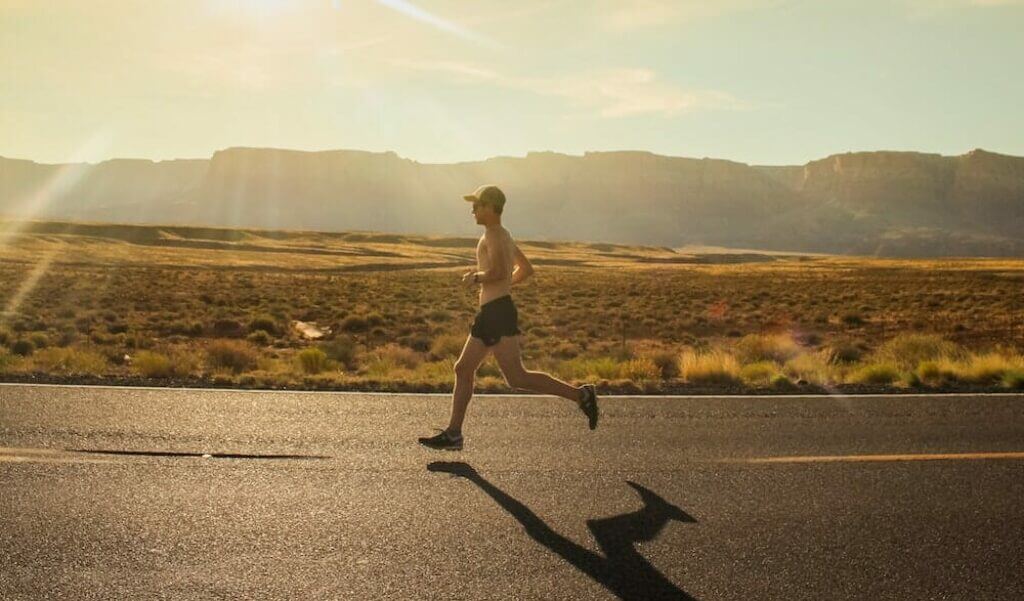Minimalist running (also called natural or barefoot running) has lost popularity in recent years. At its core is the theory that modern running shoes (i.e., with comfortable cushioning and heel to toe drop) alter the runner’s natural movement. According to minimalist running advocates, humans have walked barefoot for millions of years. The body has evolved accordingly, while modern shoes with bouncy cushioning are recent. Thus, minimalist running should be more suitable for the body by allowing it to move naturally as evolution intended it, making it stronger and, therefore, less prone to injury.
However, so far, no study has demonstrated that minimalist footwear can reduce the risk of injury. This lack of irrefutable empirical data has undoubtedly contributed to the decline of minimalism in favor of comfortably cushioned shoes. For example, the most popular shoes of 2020 are high-stack carbon plate models such as the Adidas Adizero Adios Pro or Nike Air Zoom Alphafly NEXT%.
A new study questions the effect of toe spring on foot biomechanics
The results of a new study (1) published in the Scientific Reports journal could give more weight to the minimalist running theory. Freddy Sichting of the Chemnitz University of Technology and other researchers (including the famous Daniel E. Lieberman whose work is central to Christopher McDougall’s Born to Run) have analyzed the impact of toe spring on foot biomechanics.
To do this, researchers asked participants to run in special sandals with a curvature of 10 to 40 degrees under the forefoot to mimic the toe spring of modern shoes. The experiment design is a randomized controlled trial, which is considered to be the gold standard to establish a causal relationship with a high level of confidence.
Their conclusion is as follows:
We found that toe springs alter the joint movements and work at the toes such that greater degrees of toe spring curvature resulted in lower work requirements during walking. Our results help explain why toe springs have been a pervasive feature in shoes for centuries but also suggest that toe springs may contribute to the weakening of the foot muscles and possibly to increased susceptibility to common pathological conditions such as plantar fasciitis.
Thus, toe spring makes modern shoes comfortable, but it may be at the expense of muscle foot strength.
A critical look at the implications
This study has gained widespread attention from many newspapers worldwide and seems to confirm what minimalist proponents have been saying all along.
However, as Trevor Prior, a consultant podiatric surgeon, senior clinical lecturer at Queen Mary University of London and spokesman for the College of Podiatry, quoted by The Guardian, points out:
The relationship between potential reduction in muscle strength and risk of injury remains theoretical.
Therefore, the study’s word of caution, suggesting that shoes with toe spring could increase the risk of injury, seems far-fetched, although the logic makes sense.
At any rate, Trevor Prior and Freddy Sichting agree on one point: in the absence of scientific evidence to favor one type of shoes over another, they advise to train with a range of footwear.
For example, Sichting says that he alternates between minimalist shoes and cushioned shoes to run comfortably while ensuring to train his foot muscles adequately.
What do you think? Feel free to share your experience and thoughts in the comments!
Source:
- Effect of the upward curvature of toe springs on walking biomechanics in humans.
Freddy Sichting, Nicholas B. Holowka, Oliver B. Hansen & Daniel E. Lieberman
https://www.nature.com/articles/s41598-020-71247-9
Photo: Isaac Wendland on Unsplash

